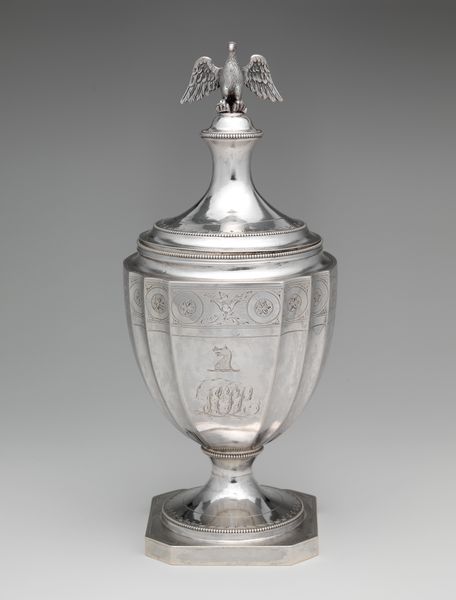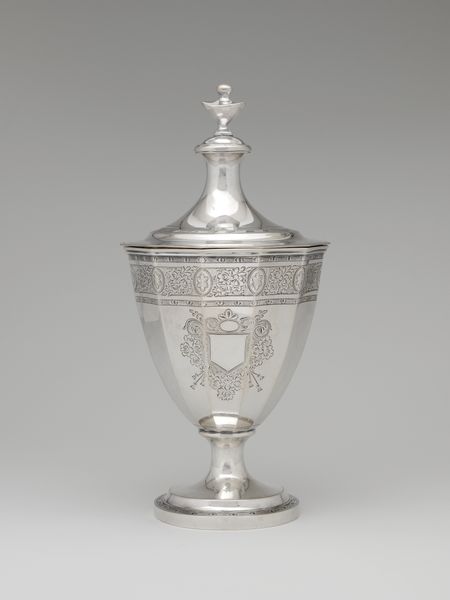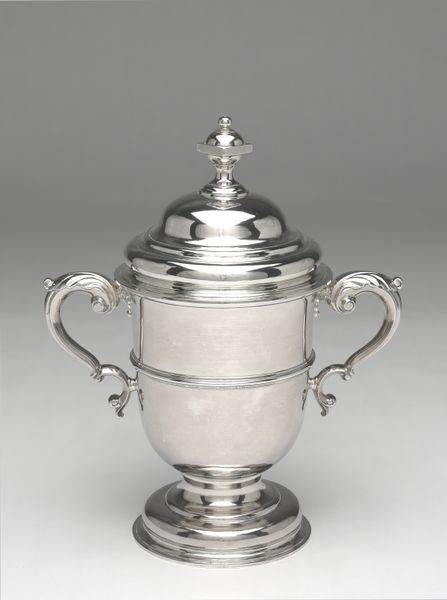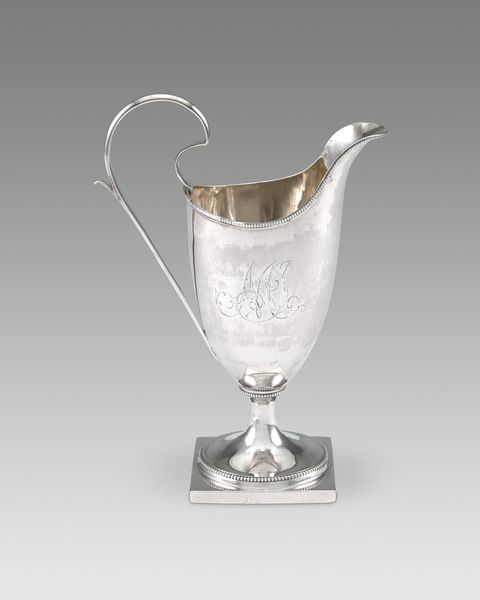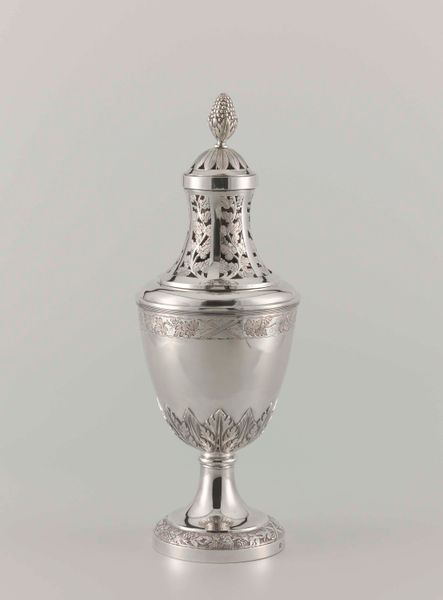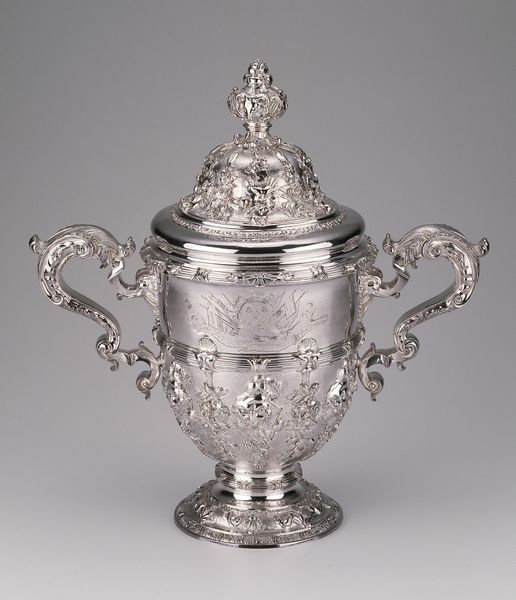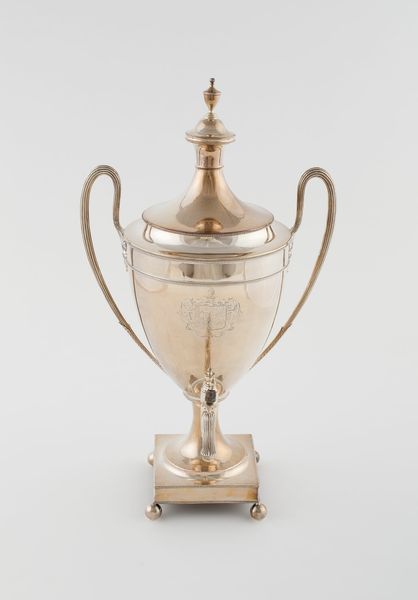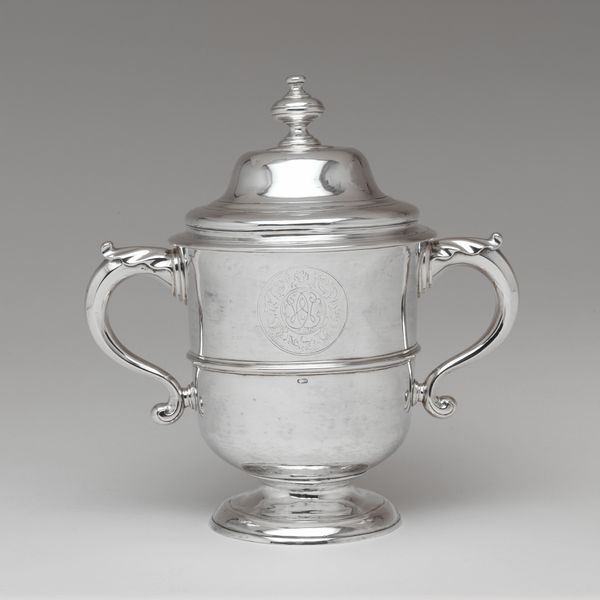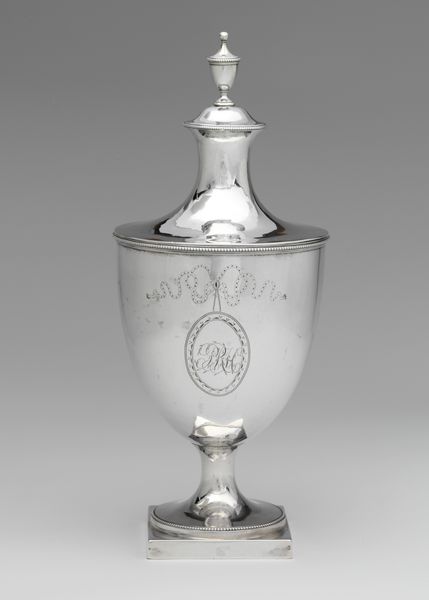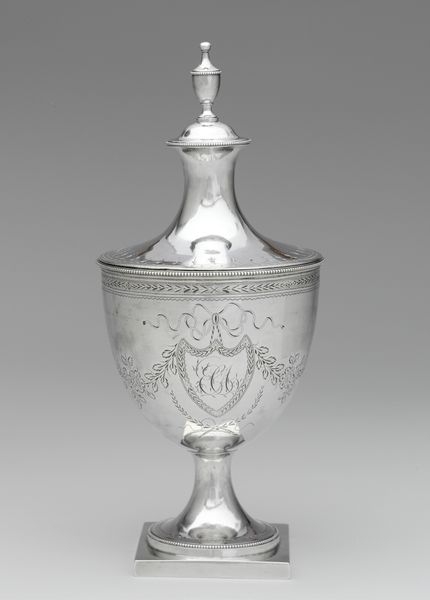
silver, sculpture
#
neoclacissism
#
silver
#
sculpture
Dimensions: Overall: H. 9 9/16 in. (24.3 cm); 13 oz. 6 dwt. (413.8 g) Lip: Diam. 3 15/16 in. (10 cm) Foot: Diam. 3 1/2 in. (8.9 cm) Cup without cover: H. 7 1/2 in. (19.1 cm); 10 oz. (311.6 g) Cover: 2 3/16 x 3 15/16 in. (5.6 x 10 cm); 3 oz. 6 dwt. (102.2 g)
Copyright: Public Domain
Editor: Here we have a silver wine cup, created by Joseph Foster between 1797 and 1800. I find its restrained elegance quite striking. How might we interpret its visual appeal? Curator: I am glad you appreciate it. Let us look closely at its composition, the cool symmetry, and restrained ornamentation, typical of Neoclassical aesthetics. Notice the cup's ovoid body resting on a slender stem and circular foot. The lines are clean, unbroken. Editor: So the form is speaking for itself. But how about its materiality? The reflection of the silver. What does it evoke? Curator: Indeed. Consider the medium: the reflective silver. This enhances the form by capturing light, accentuating its pure geometric shape, elevating a simple form into an object of ritual. Observe how light creates interplay on the surfaces and enhances its visual qualities. The craftsmanship reveals an exquisite understanding of materiality and construction, evident from its elegant profile to its meticulous detailing. Editor: So you see its structure and its intrinsic visual features as most essential in understanding it, not necessarily the historical context? Curator: Precisely. While context offers its insights, the power of the Wine Cup lies fundamentally in its masterful manipulation of form, space, and material—transcending pure functionality and approaching pure art. Editor: That is thought-provoking! Focusing on the forms gives one so much more to appreciate! Curator: And hopefully appreciate and observe better the subtleties of other art.
Comments
No comments
Be the first to comment and join the conversation on the ultimate creative platform.
